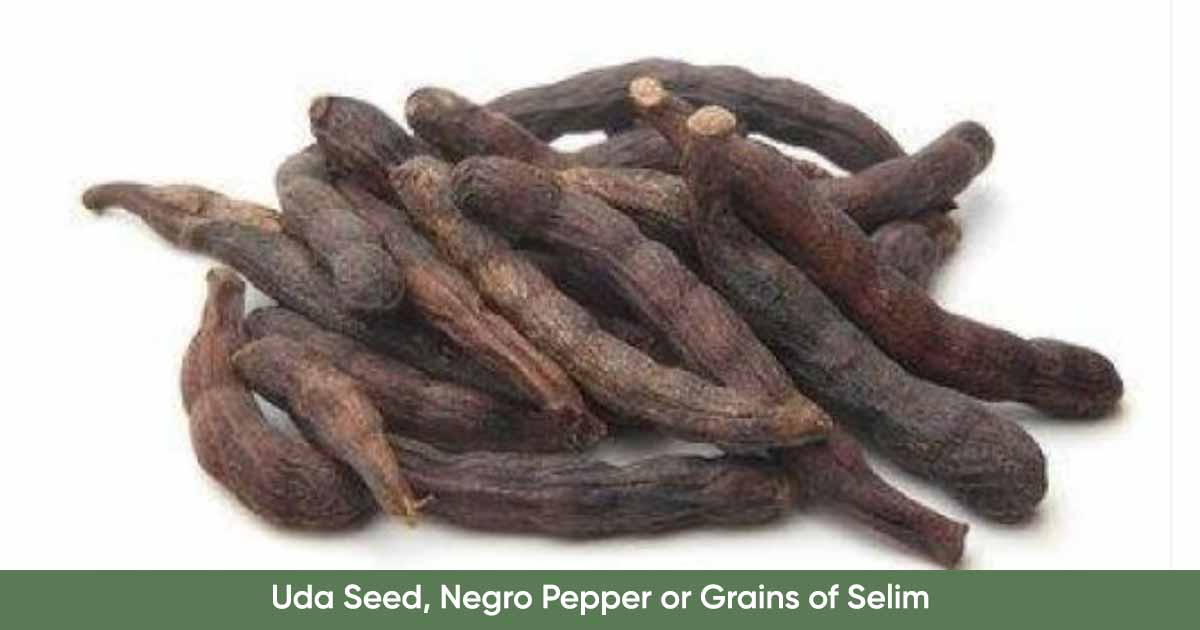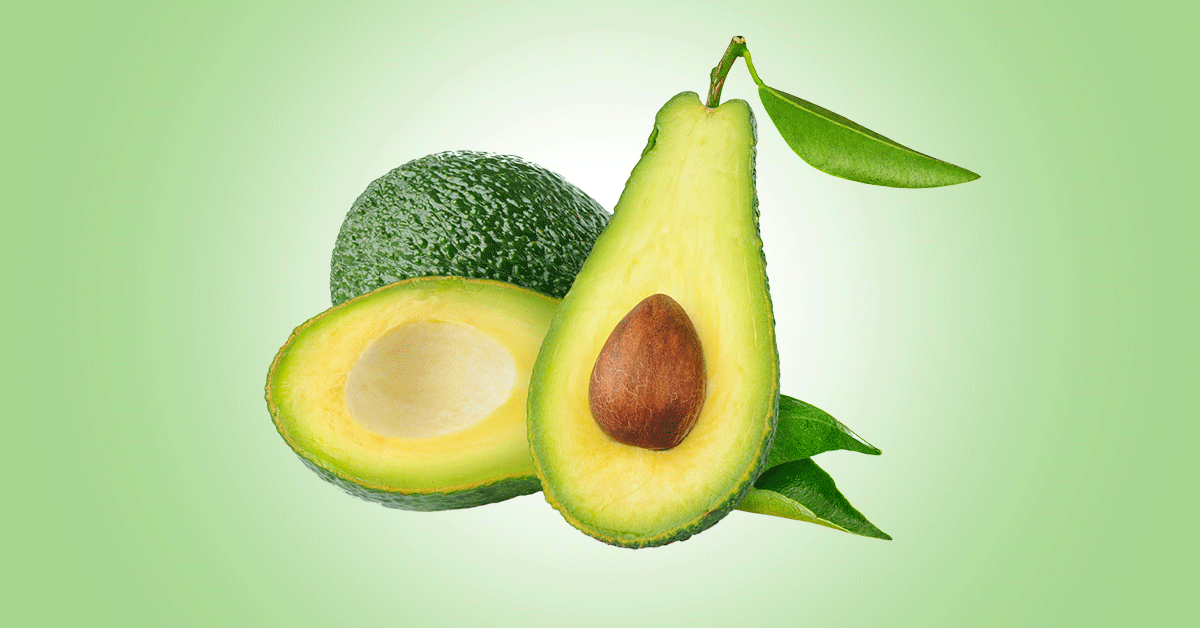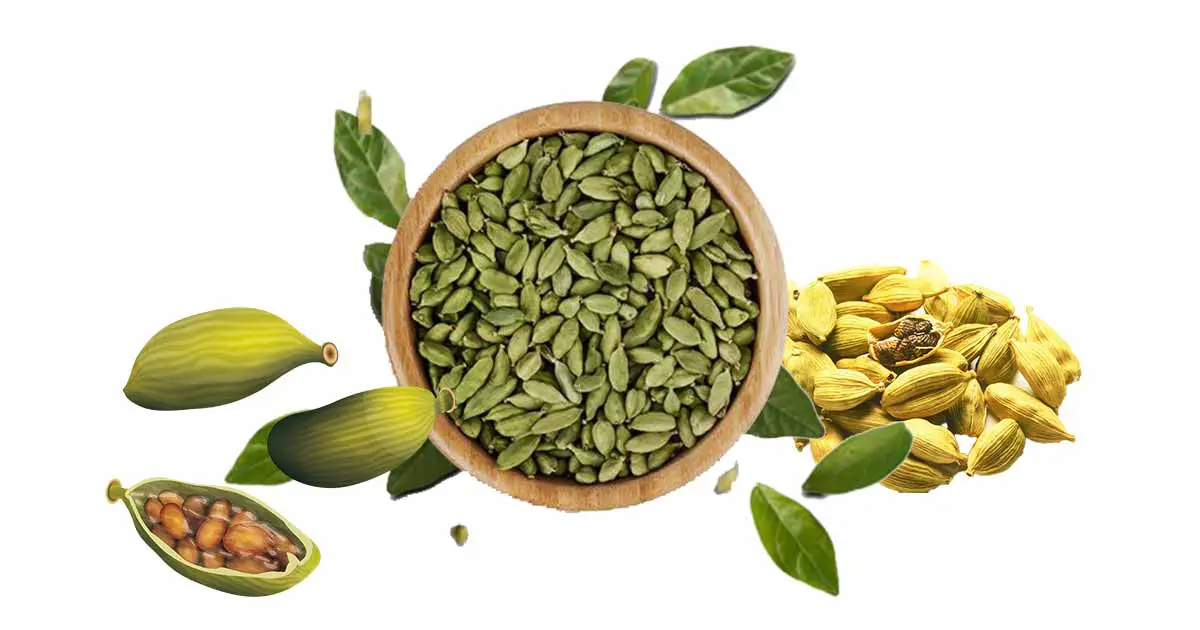Grains of Selim are the seeds of an African shrubby tree, Xylopia aethiopica. Xylopia aethiopica seeds also called Uda by the Igbos of Nigeria, Hwentia or Etso in Ghana, Erunje or Erinje in Yoruba language, Kimba in the Hausa language, diarr in the Wolof language. Other names include Ethiopian Pepper, Negro pepper, Senegal pepper, Kani pepper, African pepper, Guinea pepper, spice tree.
Negro pepper is very popular in Nigeria, Senegal, Cameroon, Ghana, Ethiopia, Brazil and other countries.
The botanical name is from Greek word, xylopia from (xylon pikron) meaning bitter wood, and aethiopica in reference to its Ethiopian origin.
Xylopia aethiopica is a tall, slim, aromatic plant from the family, Annonaceae, same as soursop. The plant which can grow up to 20 m height is widely distributed in tropical zones of west, central, and Southern Africa.
The leaves are variable in shapes, greyish green below and dark glossy green above. Each flower bear one fruit, but each fruit contain many individual carpels, as many as 20. Normally the fruit is collected, dried and sold as spices.
The seeds are black colored, kidney-shaped, 10 mm in length, with each pod containing 5 to 8 seeds. The fruits are a dense cluster of small carpels, dark brown colored, twisted bean-like pods, cylindrical, and has visible external contours of the seeds. The bark of the tree is slightly fissured and is fibrous.
Uda seed, or grains of Selim is pungent, resinous, somewhat bitter tasting, and has a unique aroma, and musky flavour. It is a peppery spice used to flavor soups, stews and to spice drinks. In Northern Cameroon, it is one of the three spices alongside dried ginger and cloves added to tea. In Senegal, it is used to flavor café Touba, a dominant coffee style in the country. Hot soup made from the seeds are given to nursing mothers after childbirth.
Grains of Selim has been used in traditional medicine to treat joint issues, rheumatic disorders, rheumatic pains, pyrexia, inflammation, and respiratory conditions like common cold, pneumonia, asthma and bronchitis. It has carminative and stimulating properties.
Other folkloric medicinal uses in Africa especially Nigeria and Ghana includes treatment of diabetes, dysentery, uterine fibroid, female infertility, syphilis, cough, amenorrhea, malaria, and hemorrhoids. The seeds are used to enhance postpartum placental expulsion. They are crushed and topically applied on the forehead to treat neuralgia and headache. The decoction or chewed seeds are also used in treating epilepsy, numbness, and anemia.
Composition
Xylopia aethiopica dried fruits contain phytochemicals such as alkaloids, tannins, flavonoids (rutin), steroids, saponin, cardiac glycosides, and carbohydrates.
The fruit of Xylopia aethiopica contains biologically active compounds like cannabisin B,
cannabisin D, lignans, such as grossamide, and demethylgrossamide. There are diterpenes such as kaurenoic and xylopic acid. It also contains an alkaloid resembling morphine, called anonaceine.
Essential oils constituents found in the plant include α-pinene, β-pinene, 1,8-cineol, α-phellandrene, bisabolene, paradol, α-terpineol, terpinene-4-ol, α-farnesene, p-cymene, myrtenol, germacrene D, linalool, β- phellandrene, trans-pinocarveol, trans-m-mentha-1(7),8-diene. Linalool in the volatile constituent gives the fresh fruit the “intense pepperish taste”.
The bark essential oil contains pinene, trans-pinocarveol, verbenone and myrtenol while the leaf oil has spathulenol, cryptone, beta-caryophyllene and limonene (Ayedoun, et al., 1996)
Nutritional Composition
Uda seeds contain moisture (8.43 g/100 g), ash (5.89 g/100 g), crude lipid (9.58 g/100 g), crude protein (12.45 g/100 g) crude fiber (8.66 g/100 g) and carbohydrate (63.65 g/100 g) (J.T. Barminas et al. 1999).
Unsaturated fatty acids include linoleic (45.1 g/100 g) and oleic (26.5 g/100 g) while palmitic acid (18.0 g/100 g) is the main-saturated fatty acid in grains of Selim.
Uda seeds contain minerals like calcium, magnesium, potassium, sodium, zinc, phosphorus, and iron. Calcium, magnesium, and potassium are the most abundant minerals.
Health Benefits of Uda Seeds (Xylopia aethiopica)
Uda seeds have antiplasmodial, analgesic, anti-inflammatory, antidiabetic, and antimicrobial effects
Anti-oxidant effect:
Negro pepper contains antioxidant compounds such as phenols and flavonoids that act as radical scavengers in the body system and prevent diseases like cancers, inflammation, and heart diseases.
Anti-inflammatory and analgesic effect:
Ethanol extract of the fruits of X. aethiopica inhibits the release of histamine from mast cells (Obiri and Osafo, 2013).
The extract also inhibit acetic acid–induced visceral nociception, acetic acid–induced pain (writhing) model in mice, formalin-induced paw pain, and thermal pain. This effect is also tested with carrageenan-induced mechanical and thermal hyperalgesia in murine models (Woode et al., 2012).
Uda seeds contain kauranes (kaurenoic and xylopic acid) which are group of diterpenes that provide anti-inflammatory effect by impairment of inflammation signaling through inhibition of NF-κB activity (Castrillo et al., 2001).
Anticancer effect:
Xylopia aethiopica seeds from Cameroon exhibit anticancer effect against human pancreatic carcinoma cell line, leukemia, human pancreatic carcinoma cell line, and human promonocytic cell line. The anticancer and cytotoxic compound was reported to be the diterpenoid, ent-15- β -acetyloxy-kaur-16-en-19-oic acid (xylopic acid) and ent-7-oxo-kaur-16-en-19-oic acid (Victor Kuete et al. 2013).
Antimicrobial activity:
Both fresh, dried fruit, stem bark and root bark essential oils of Xylopia aethiopica has antimicrobial activity against gram-negative bacteria Pseudomonas aeruginosa, E. coli, C. violaceum, and gram-positive bacteria, Bacillus subtilis and Staphylococcus aureus, and the yeast-like fungus Candida albicans, Aspergillus niger – Fleischer, et al., (2008).
Anti-malarial activity:
Xylopic acid, a compound isolated from the fruits of the Xylopia aethiopica, prevented P. berghei infection and reduced parasitaemia similarly to standard medication, artemether/lumefantrine. In addition to this antimalarial activity, it also exhibits antipyretic activity by suppressing lipopolysaccharide- (LPS-) induced fever in Sprague-Dawley rats similar to prednisolone – J. N. Boampong, et al., 2013.
Another study by Silas Acheampong Osei, et al., 2021, reported that administering xylopic acid with either artesunate or amodiaquine can produce a synergistic anti-plasmodial effect in mice infected with P. berghei.
Lipid lowering effect:
Xylopia aethiopica fruit extract decrease serum cholesterol, triglyceride, and LDL in Wistar rats (Nnodim, et al., (2011). Also, treatment with X. aethiopica and Questran reduced serum cholesterol levels, LDL-C level, with increase in antioxidant enzymes such as superoxide dismutase, catalase, and glutathione in hypercholesterolemic rats – Sarah, et al., (2011).
This suggests that grains of Selim can protect against atherosclerosis and hypertension.
Antidiabetic effect:
In a study by Aminu Mohammed et al., 2016, the fruit extract of Xylopia aethiopica reduced serum glucose, serum fructosamine, serum lipids, liver glycogen, and improved serum insulin, glucose tolerance, and β-cell function in rats induced with type-2 diabetes using intraperitoneal injection of streptozotocin.
A pentacyclic triterpene, oleanolic acid (OA) isolated from fruit inhibits α-amylase and α-glucosidase enzyme activities, and is thought to be responsible for the antidiabetic action.
Blood boosting:
The uda seed extract boosts haemoglobin concentration, packed cell volume, red blood cell count and platelet in Wistar rats – Nnodim, et al., (2011)
Hepaprotective effect:
The fruit extract of Xylopia aethiopica protected the liver cells against acetaminophen-induced liver damage in male Wistar rats – (Folorunso, et al., 2013).
However, a study by Obodo et al., rather reports that Xylopia aethiopica leaves administration can elevate liver enzymes and cause hepatic damage due to xylopic acid content.
Fertility effect:
Xylopia aethiopica seed extract increases antioxidant enzymes such as catalase, superoxide dismutase, and also increased sperm concentration, count, and motility in the reproductive organs of adult Wistar rats with ethanol-induced oxidative conditions. Hence, the seed could prevent oxidative stress and improve fertility (Uloma B. Elvis-Offiah et al. 2020).
However, a study by Eze showed that the ethanol extract of Xylopia aethiopica decreased sperm count, quality, and percentage of sperm with normal morphology in male rats, suggesting anti-fertility effect (Eze, 2012). In another research, it also decreased the levels of follicle stimulating hormone, luitenizing hormone, testosteerone, prolactin and estradiol in rats (Nnodim, et al., 2013).
Ovicidal activity:
Essential oils of Piper guineense and Xylopia aethiopica exhibit strong ovicidal activity against T. castaneum.
Insecticidal activity:
Ethanolic extracts of Allium sativum, Cordia millenii, Monodora myristica, Xylopia aethiopica, and Zingiber officinale exhibited strong insecticidal activity against Callosobruchus maculatus. The essential oils from the whole fruit and fiber of the fruit contains mainly α-pinene, β-pinene, Δ-3-carene and terpinen-4-ol, and was insecticidal against the maize weevil, Sitophilus zeamais adults (H. Kouninki et al., 2007)
In some traditional settings, it is mixed with Capsicum peppers and kolanuts to repel weevils.
Anthelmintic activity:
The seed extract serves as a vermifuge for roundworms (Dalziel, 1973)
Anti-trypanosomal activity:
The volatile oil of X. aethiopica reduced the viability of trypanosomes (T. b. brucei)
Toxicity
A study on the safety of the Xylopia aethiopica fruit shows it exerts oral toxicity at doses higher than 3000 mg/kg. However, the median lethality dose suggest it may not be safe to consume more than 3000 mg/kg (Akinloye OA et al. 2019)
References
- https://www.mychopchop.ca/pages/all-you-need-to-know-about-uda-seeds-negro-pepper
- https://journaljeai.com/index.php/JEAI/article/view/612/1226
- https://www.ncbi.nlm.nih.gov/pmc/articles/PMC6572195/
- https://doi.org/10.1016/B978-0-12-405927-6.00018-7
- https://doi.org/10.1016/B978-0-12-809286-6.00009-1
- https://www.ajol.info/index.php/wajpdr/article/view/218359/205953
- https://doi.org/10.1111/j.1439-0418.2007.01154.x
- https://link.springer.com/article/10.1023/A:1008028523118#citeas
- http://www.fortunejournals.com/articles/median-lethality-dose-of-xylopia-aethiopica-fruit-ethanol-extract.html
- https://congotrees.rbge.org.uk/species/details/xylopia-aethiopica
- https://www.researchgate.net/publication/290436221_Xylopia_Aethiopica_A_Review_of_its_Ethnomedicinal_Chemical_and_Pharmacological_Properties
- https://www.ncbi.nlm.nih.gov/pmc/articles/PMC3732589/
- https://www.ncbi.nlm.nih.gov/pmc/articles/PMC7908739/
- http://nanobioletters.com/wp-content/uploads/2021/09/22846808113.38973908.pdf
- https://doi.org/10.1016/j.jep.2016.01.009












